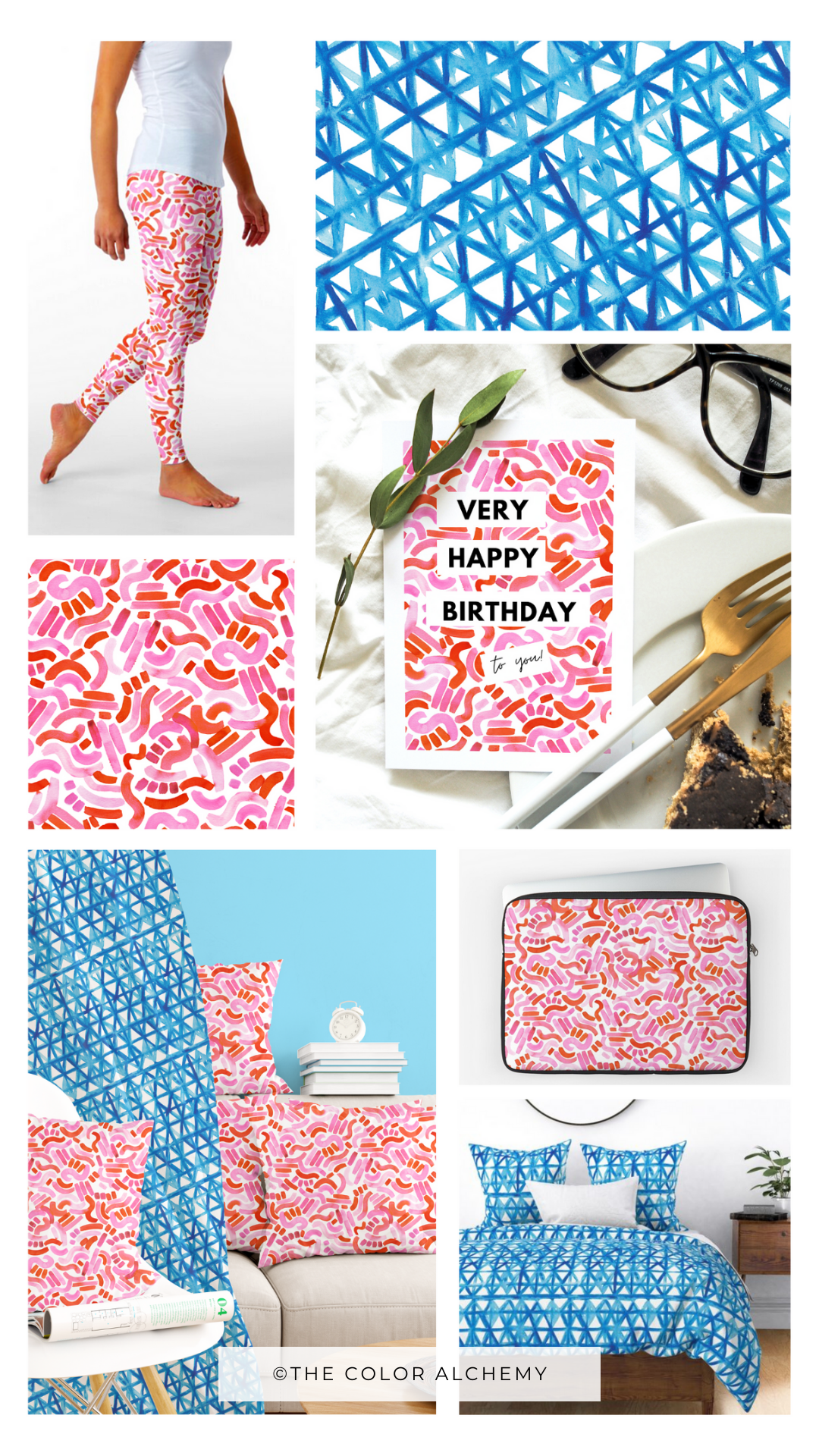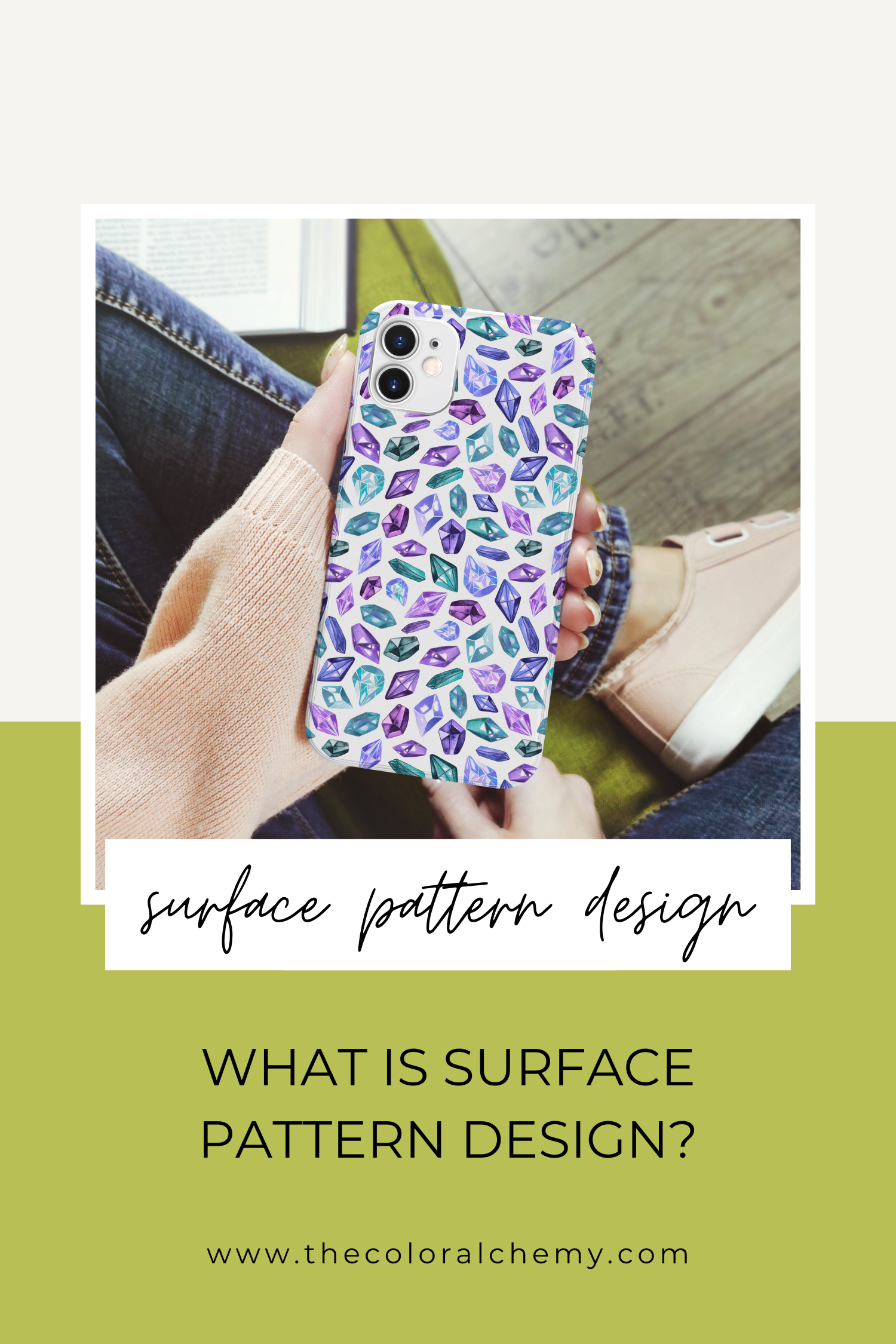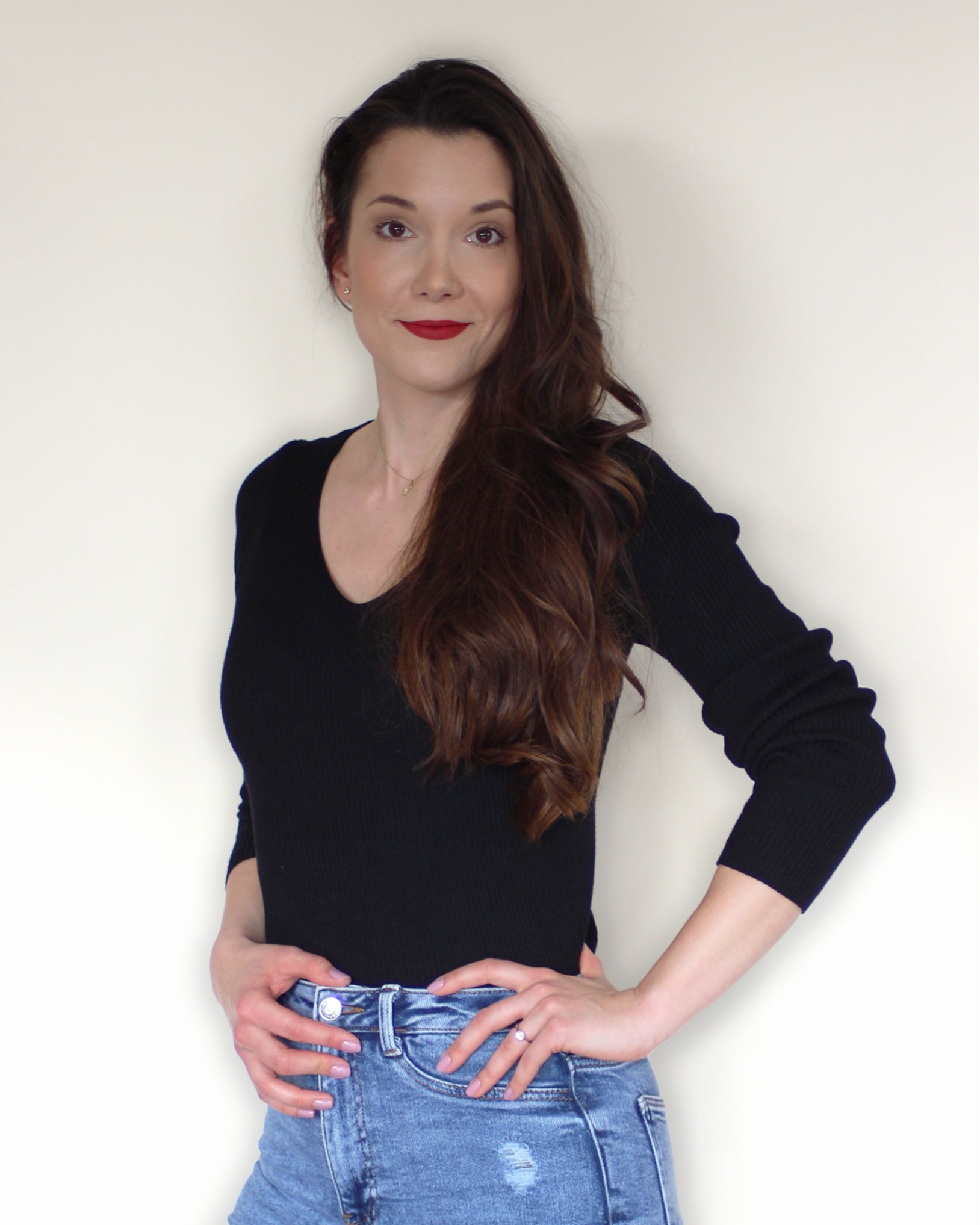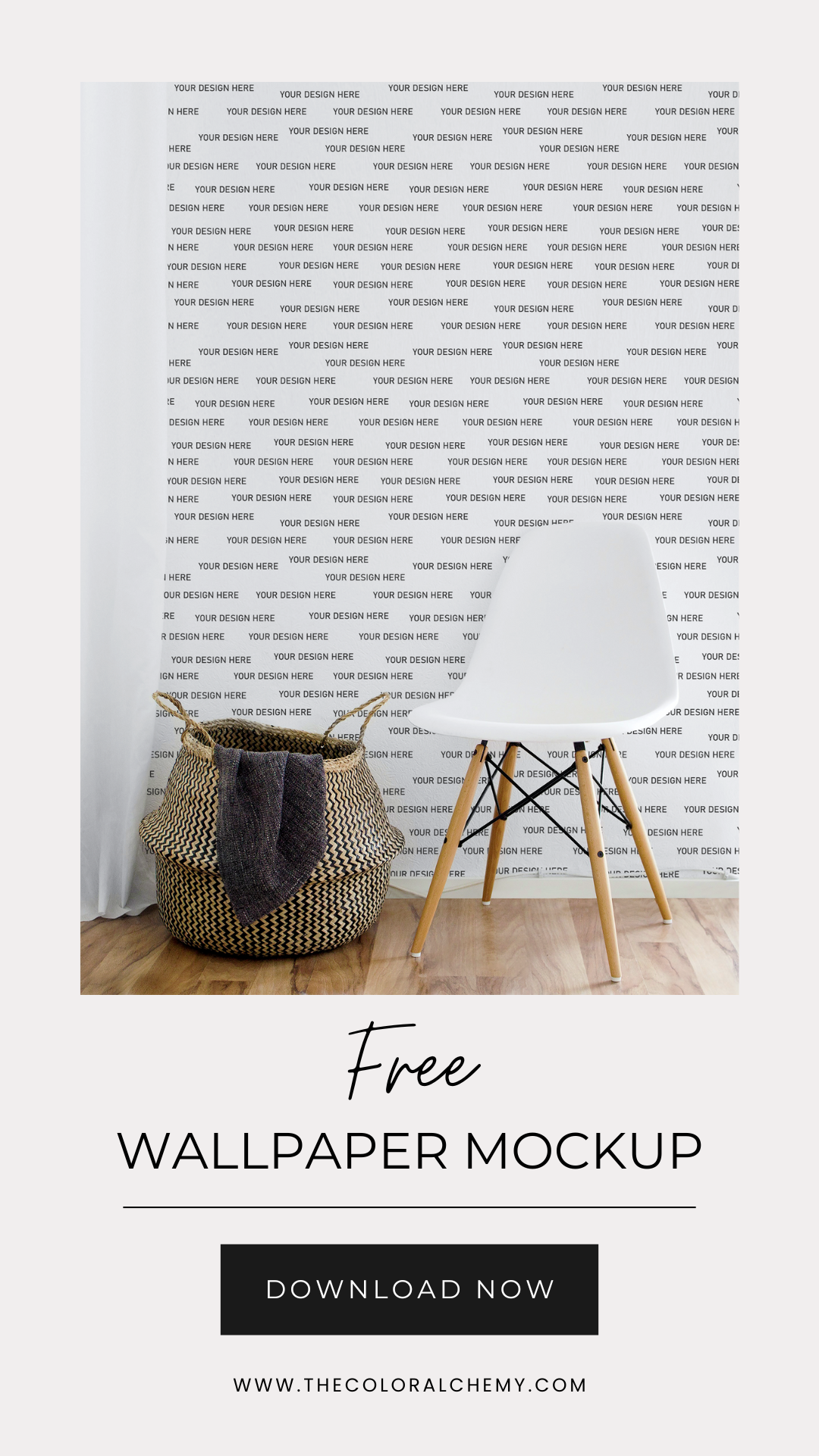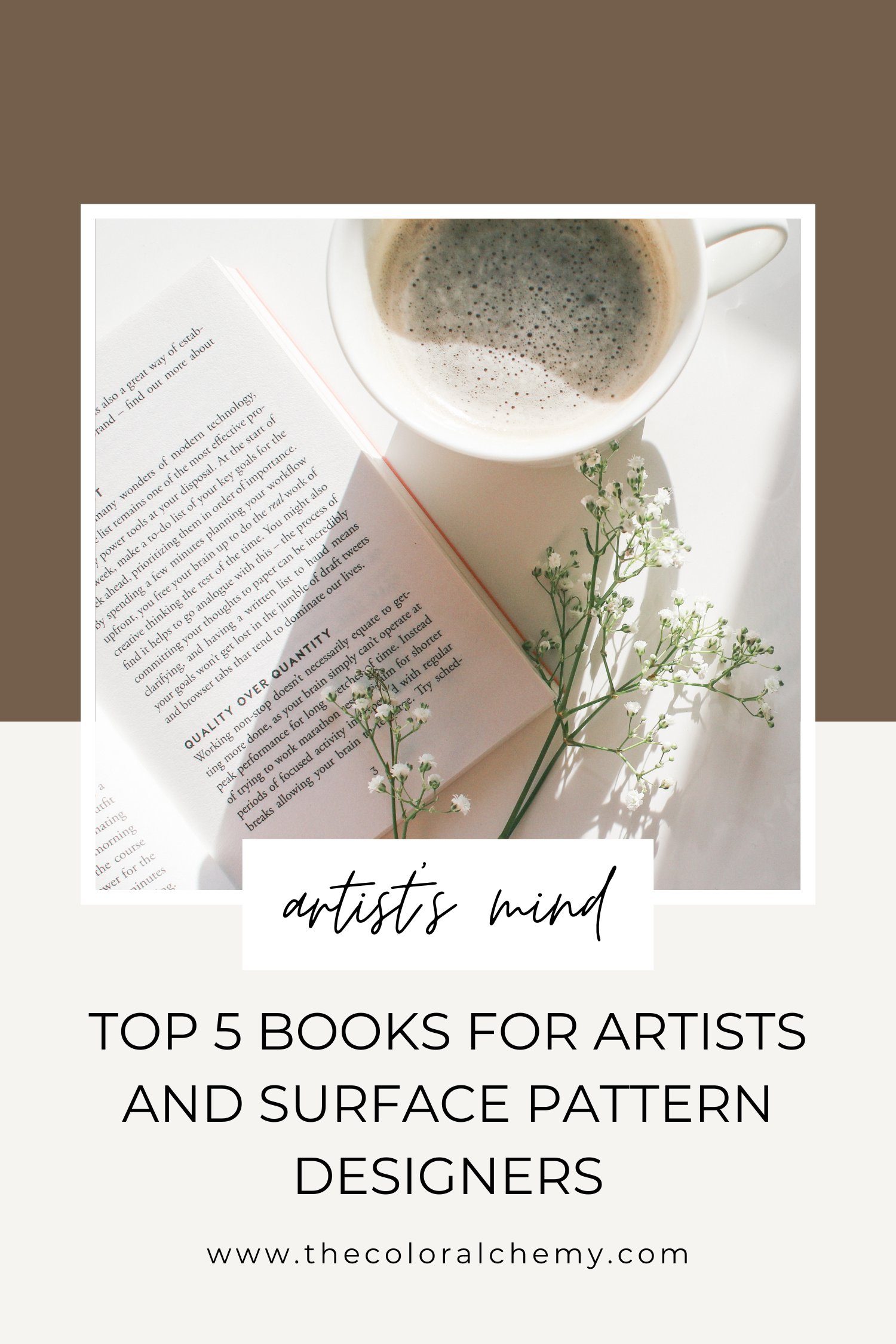What is Surface Pattern Design?
Have you ever wondered about those cool designs on your clothes, walls, or even the packaging of your favourite products? That's the magic of surface pattern design! Let's dive in and discover why making ordinary things look unique is so compelling.
clarifying terminology
Before we start, let’s clear up some terminology so we are on the same page!
Surface Design refers to the process of creating designs or artwork intended to be applied to various surfaces. These can include textiles, paper, ceramics, wood, glass, plastic, and much more. Surface design cover a wide range of techniques/ disciplines, and pattern design is one of them.
Pattern Design specifically focuses on the creation of repeating motifs or designs arranged in a structured manner to form a pattern. It involves careful consideration of elements such as scale, rhythm, symmetry, and color coordination.
Wallpaper Mockup by THE COLOR ALCHEMY - Get it FOR FREE HERE!
Read more about Surface Pattern Design Terminology HERE
“Put simply, all patterns are designs, but not all designs are patterns.”
Defining Surface Pattern Design
Surface pattern design refers to the art of creating decorative patterns that adorn various surfaces, transforming them into visually engaging and aesthetically pleasing elements. These patterns can be applied to a wide range of products, including fabrics, wallpapers, ceramics, packaging, and even digital platforms. The primary goal of surface pattern design is to enhance the visual appeal of an object or space.
Evolution of Surface Pattern Design
The roots of surface pattern design can be traced back through centuries, with patterns adorning textiles and pottery in ancient civilizations. However, it wasn't until the 19th century that surface pattern design emerged as a distinct and recognized field. The Industrial Revolution played a crucial role in this evolution, enabling the mass production of patterned goods and democratizing access to beautifully designed products.
The 20th century witnessed the rise of iconic pattern designers such as William Morris, known for his intricate floral patterns, and the Bauhaus movement, which embraced geometric and abstract designs. Fast forward to the present day, and surface pattern design has become a dynamic and ever-evolving field, influenced by a myriad of artistic styles, cultural movements, and technological advancements.
💡 A tip for book
The Complete Pattern Directory by Elizabeth Wilhide is a comprehensive guide through the world of pattern design. From traditional textile weaves to contemporary prints, the book showcases a diverse collection of patterns from various cultures and periods, providing insightful commentary on their origins and significance. Beyond textiles, Wilhide explores patterns in ceramics, architecture, and decorative arts, tracing their evolution and influences across time and geography. With clear categorization and practical information, this precisely curated directory is a valuable resource for designers and enthusiasts, celebrating the richness of human creativity.
The Complete Pattern Directory by Elizabeth Wilhide
Applications of Surface Pattern Design
Surface pattern design is used in numerous industries, enhancing both functional and decorative elements of our surroundings. Let’s go through some examples:
Textiles
Patterns adorn fabrics used in fashion, upholstery, and home decor, adding personality and style to everyday items.
Wallpapers
Wallpapers transform interior spaces, providing a canvas for expressive patterns that reflect personal taste and design aesthetics.
Packaging
From product packaging to gift wraps, surface pattern design enhances the visual appeal of consumer goods, making them stand out on shelves.
Stationery and Print Design
Patterns commonly embellish items such as notebooks, greeting cards, calendars and planners, office supplies or stationery accessories.
Digital Platforms
In the digital realm, surface pattern design contributes to user interfaces, websites, and digital graphics, creating immersive and visually pleasing experiences.
Key Elements of Surface Pattern Design
1) Color Palette
The choice of colors is fundamental in surface pattern design. A well-curated color palette can evoke specific emotions and set the tone for the overall design. Designers often experiment with various color combinations to achieve a harmonious and visually appealing result.
2) Motifs and Elements
Whether inspired by nature, geometry, or cultural motifs, surface pattern design relies on the repetition of elements to create a cohesive and engaging pattern. These motifs can range from simple geometric shapes to more intricate and detailed illustrations.
3) Scale and Repeat
One of the defining characteristics of surface pattern design is its ability to seamlessly repeat across a surface. Designers carefully consider the scale of their patterns to ensure they work harmoniously when repeated, whether it's on a small piece of fabric or a large wall mural.
4) Theme and Narrative
A compelling surface pattern often tells a story or conveys a theme. Whether inspired by nature, culture, or abstract concepts, a well-defined narrative adds depth to the design. Themes can be expressed through the choice of motifs, symbols, or the overall composition of the pattern. This storytelling aspect not only enhances the aesthetic appeal but also connects the pattern to its intended purpose or audience.
5) Versatility
This is a key consideration, especially in the commercial realm. Surface patterns are applied to a wide range of products, from textiles and wallpapers to packaging and digital interfaces. Designers must create patterns that can seamlessly adapt to different surfaces and contexts while maintaining their visual integrity. A versatile pattern expands its potential applications and market reach.
Surface pattern design is a fascinating blend of art and practicality that adds life to everyday objects surrounding us.
It enhances aesthetics by introducing captivating colors, textures, and intricate designs, providing a means for personal and brand expression.
Pattern design creates emotional connections, influences trends, and differentiates products in the market, making items stand out with unique and stylish features. Patterns also contribute to enjoying everyday interactions, inspire creativity, and bring art into daily life by seamlessly integrating it into functional items.
Pin this article for later ✔
NAVIGATE BY CATEGORY
AUTHOR
HI THERE, I'M PETRA! :)
Independent Surface Pattern Designer, Watercolor Enthusiast and Pattern Lover. The creative force behind THE COLOR ALCHEMY🌈🎨🙋🏻♀️





